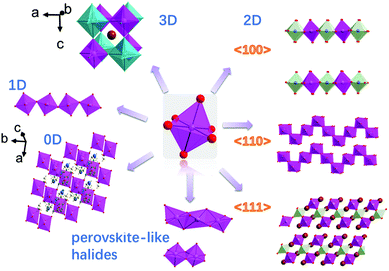Adv. Opt. Mater., 2019, 7(24), 1901335. https://onlinelibrary.wiley.com/doi/abs/10.1002/adom.201901335
With single-component photoinduced white-light (WL) emission, low-dimensional hybrid halide perovskites have emerged as a new generation of luminescent materials; however, the effect of halogens on the intrinsic light emissions and the corresponding mechanisms is still unknown. Herein, the investigation of a family of two-dimensional (2D) hybrid perovskites R2PbBr4−xClx (R = BA+, PMA+, PEA+; x = 0, 1, 2, 3, 4) highlights the influence of halogens on intrinsic emission to reveal the dependence of the photoluminescence on the nature and contribution of the halogens. Ultrabroad emissions covering the entire visible-light region are achieved in the halogen hybrid systems with the stoichiometry of R2PbBr2Cl2 (R = BA+, PMA+, PEA+), showing their potential as single-component WL phosphors in solid-state lighting devices. The origin of the WL emissions is the synergistic recombination emission of free excitons and self-trapped excitons. The ratio of halogens (Br/Cl) is confirmed to be a critical factor to fine-tune the intrinsic emission properties. This work provides a feasible strategy to achieve single-component WL emission in 2D hybrid perovskites, and proposes a method for regulating halogen contents for optimizing luminescent properties.





